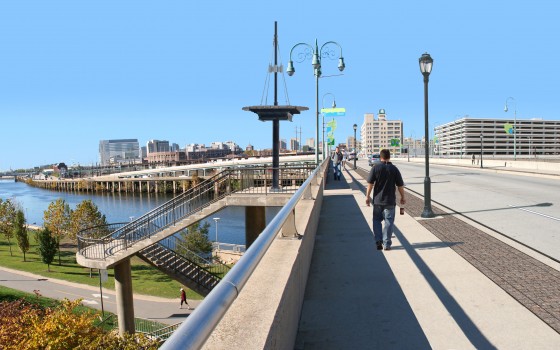The Walnut Street Bridge is going to be more easily accessible to all of its users (i.e. drivers, bikers and pedestrians), rather than it being predominantly for motor-vehicle traffic. Currently, the bridge possesses four traffic lanes, a bike lane and two eight-foot sidewalks. Pedestrian and bike traffic has increased considerably and the bridge currently isn’t set up to accommodate all that traffic.
To make the Walnut Street Bridge more conducive to current traffic, design team Michael Baker Engineers will reduce the number of lanes from four to three which will allow for the sidewalks to be expanded to 12’. According to the Schuylkill River Development Corporation, reducing the number of lanes will also help to calm the traffic, creating a symbiotic relationship between bikers, pedestrians and vehicles. In addition to these changes, the large street signs will be replaced with smaller signs in order to make it feel less like a highway. The current cobra head lights will also be replaced with Center City District lights and pergolas will be placed at the stairways to the Schuylkill Banks, which will help with aesthetics (landscaping for the project is being spearheaded by Lager, Raabe, Skafte Landscaping Architects for Penndot).
The Walnut Street Bridge Project seems to be creeping closer to reality, as it has already received federal stimulus funding from the Transportation Investment Generating Economic Recovery (TIGER) program and a federal earmark grant. In order to use this funding, the bridge project must be complete by 2012, so the plan is for construction of the bridge to start this summer and be finished by next spring. We will be anxious to see the physical transformation of the bridge as well as how much more efficient it will (or will not) be.

